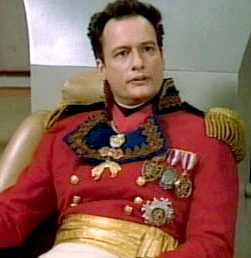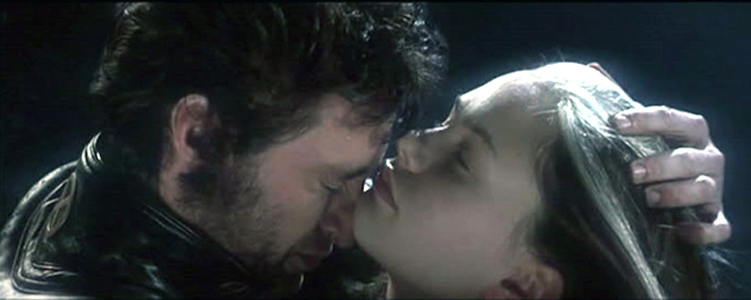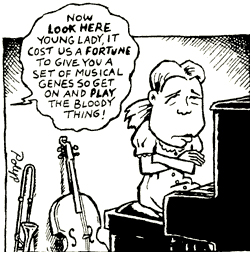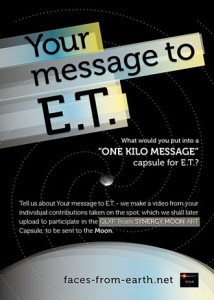by Larry Klaes, space exploration enthusiast, science journalist
Athena’s note: Larry’s article is particularly timely, given the recent buzz about the Earth-type planet Gliese 581g.

Part 1
Part 2
For those who may still wonder and question just how much weight the words of the famous cosmologist Stephen Hawking hold for the concept of alien intelligences and their potential reactions to encountering humanity, consider this: A new science fiction film coming out this November titled Skyline recently released its theatrical trailers.
One of the older Skyline trailers begins with the line: “On August 28th, 2009, NASA sent a message into space farther than we ever thought possible… in an effort to reach extraterrestrial life.”
Now it is true that on that date a transmission was broadcast into deep space by a NASA-owned radio telescope located in Australia. This collection of messages from people all over the world (sent as part of the Hello from Earth campaign) was aimed at a planet in the red dwarf star system of Gliese 581, which is only 20.3 light years, or 194 trillion kilometers from us. That may seem like a long way to Earth-bound humanity, but on a celestial scale the Gliese 581 system is a near neighbor. As of this writing, the transmission has traveled just over one light year. That isn’t even far enough to reach our closest stellar neighbors, the Alpha Centauri system 4.3 light years away, let alone merit the title of the farthest-flung human message ever.
As a final point, we simply don’t know if life of any kind exists on or near the target of Hello from Earth, the fourth world circling the star Gliese 581. However, astronomers now think at least one and possibly three planets in that system have the potential to possess liquid water, a major ingredient for the formation of at least terrestrial types of life. Of course the transmission is not going to stop once it reaches that alien planet. The messages will spread outward and onward into the galaxy at light speed, which will give them an increased chance of being detected some day by an ETI, assuming any exist in the signal path.
After this inauspicious beginning to the trailer, the viewer is treated to some apparently real news broadcasts about Hawking’s alien warnings interspersed with images of strange bluish-white meteor-like lights dropping down upon Los Angeles. In the news segments, former CBS Television news anchor Dan Rather intones that “if extraterrestrials visit us, the outcome might be similar to when Columbus landed in America. In other words, it didn’t turn out too well for Native Americans.” The trailer caps off this dire warning with the text “Maybe we should have listened.” And done what, I have to ask? Cover Earth in black tarp with some stars painted on the outside and hope nobody notices us?
Too late. The menacing spaceships of the alien Columbuses, looking like gothic metal sculptures, are bearing down on the places where the lights landed. The name of the film flashes on the screen, then comes a close-up of one of the alien vessels hovering over LA. Its underside open wide like the jaws of some immense beast, it’s pulling thousands of tiny screaming, tumbling humans up through the air and into itself for reasons yet unknown, but ones the audience has little trouble imagining may not be for the benefit of humanity.
A final text warning commands us “Don’t look up!” The injunction is directly counter to everything our society has been taught in terms of social progress and evolutionary development – to say nothing of what the recently deceased astronomy popularizer Jack Horkheimer said at the end of every episode of his PBS program, Star Gazer, which was to “Keep Looking Up!”

More Than One Side to the Alien Encounter Debate
Aside from the near-certainty that Skyline will be little different or better than the majority of alien invasion stories of the last one hundred years, using the real words of a real scientist (and a cosmologist at that) to give a sense of weight and urgency to just one side of the concept of alien interaction with our species ultimately blurs and overshadows the wider range of possible outcomes for what may one day define the ultimate course of humanity among the stars.
While it is true that the primary overall purpose of Skyline is a material one – to line the pockets of its makers with money by appealing to the basic instincts of those who will provide said profits – the film (and Hawking) are nevertheless contributing to the debate on how we should deal with other intelligences in the Cosmos. This is the case whether the filmmakers had any deep intentions of doing so or whether the idea is plausible.
Too many science fiction stories about aliens tend to focus on the negative aspects of encounters between different sentient species, thus biasing (and reflecting) public thought on this topic. So it is both fitting and important to take a look at just how plausible dire predictions like Hawking’s truly are. Of course, there are certain limits as to how much one can reasonably determine what an ETI may do in regards to humanity in its present state: not yet knowing for certain if there is any life beyond Earth tops the list here. However, we do possess enough scientific and technological knowledge to make some plausible determinations on just how likely our greatest fears about our galactic neighbors might be.
Just as SETI requires its hypothetical subjects to share some common elements with humanity in order to work, any beings who wish to harm us must also think and behave somewhat like us. So when examining types of invading aliens, I am excluding the ones with abilities we would consider to be godlike: able to appear at will anywhere or anytime and commanding so much knowledge and power as to make the act of rendering us extinct a quick and easy exercise. I presume that if such superbeings wanted us gone, it would have happened by now.
 The fact that this has not happened could mean a number of things: they are much too smart and nice to harm others; they don’t care about us one way or the other; or they will destroy us but just haven’t gotten around to it yet. So I will not speculate further on superETI, except to warn that beings able to do just about anything blur the line between science and fantasy. In addition, I make no pretense that my lists of alien motives and weaponry are in any way complete, so further ideas are welcome.
The fact that this has not happened could mean a number of things: they are much too smart and nice to harm others; they don’t care about us one way or the other; or they will destroy us but just haven’t gotten around to it yet. So I will not speculate further on superETI, except to warn that beings able to do just about anything blur the line between science and fantasy. In addition, I make no pretense that my lists of alien motives and weaponry are in any way complete, so further ideas are welcome.
The Why of Alien Invaders
Since invading another world across interstellar distances requires serious time and resources, our hypothetical alien marauders will not attempt to take down humanity and its home planet on a whim or to follow some cliché of galactic hegemony. Like the future humans in the 2009 film Avatar who travelled 42 trillion kilometers to reach the Alpha Centauri system moon Pandora for its mineral wealth to aid their ailing civilization, our invaders will have to come up with a compelling reason to travel all that way if they ever literally want to leave the ground.
Of all the “whys” for an alien assault on Earth, taking our planet as a new place to live and utilize because their homeworld is dying or destroyed for one reason or another, is at least as old as H. G. Wells’ The War of the Worlds.
Well’s 1898 novel was a reflection on how European colonizers of the era were treating the people and places they were colonizing and an extrapolation of the idea of advanced beings responding to the slow but inevitable demise of the habitability of their home planet, in this case Mars. The numerous astronomical reports of seemingly straight lines on the Red Planet since 1877 had led to speculation that they were artificial.
The wealthy American astronomer Percival Lowell championed the idea that the lines were actually immense canals built by the Martians to bring water from the icy white polar caps to quench their drying, dying cities. While Lowell seems to have assumed the superior Martians would eventually accept the end of their species and become extinct with dignity, Wells imagined these same creatures not wanting to go down with their planetary ship, thus their invasion of Earth.
Of course, one advantage Wells’ Martians had over just about any other species in the Milky Way galaxy was living so relatively near to our world. A conventional rocket can propel a spacecraft to Mars in a matter of months, as they have in reality since the early 1960s. However, it is an entirely different matter to send a ship between even the nearest stars. Unlike the vessels of science fiction which are equipped with fanciful warp and hyper drives or have a convenient cosmic wormhole nearby, our current knowledge of what it would take to get from one star system to another is fraught with technological and celestial hurdles that make even a slow multigenerational ship a daunting task.
So even if an alien planet was going down the drain ecologically, geologically or cosmically, would it be wise (to say nothing of practical) to send a fleet across interstellar space to take over another star system? Unless their sun was turning into a red giant or going supernova, it would be far easier to utilize the worlds in their own solar system for resources and settling. For example, if an alien society was in desperate need of water like Lowell’s and Wells’ Martians, it would be much cheaper to mine the many, many comets that we know circle other stars, just as they do at the fringes of our Sol system. And while we have yet to detect any exomoons, we do know that most of the moons circling the four Jovian planets are covered in water ice and some, like Jupiter’s Europa, probably have deep global water oceans.
 The same goes for mineral resources. The Milky Way galaxy alone is estimated to contain many billions of solar systems. Presumably they have lots of planetoids and comets in addition to their major worlds, just like our celestial neighborhood. It is also probable that many of those worlds are uninhabited but rich in elements that a technological civilization would find useful. So even if our marauding aliens do want to journey all the way across the galaxy for gold or oil or whatever, why focus on Earth and its environs when the pickings are so easy and plentiful elsewhere? Hauling all those rocks home would be expensive as all get out. So trying to colonize a solar system that already has one intelligent species, even if that species is just starting to explore and utilize space, might be more trouble than it is worth.
The same goes for mineral resources. The Milky Way galaxy alone is estimated to contain many billions of solar systems. Presumably they have lots of planetoids and comets in addition to their major worlds, just like our celestial neighborhood. It is also probable that many of those worlds are uninhabited but rich in elements that a technological civilization would find useful. So even if our marauding aliens do want to journey all the way across the galaxy for gold or oil or whatever, why focus on Earth and its environs when the pickings are so easy and plentiful elsewhere? Hauling all those rocks home would be expensive as all get out. So trying to colonize a solar system that already has one intelligent species, even if that species is just starting to explore and utilize space, might be more trouble than it is worth.
Now let’s look at another classic reason for an ETI to want to come to Earth: Dinner. It has become practically an old joke that some aliens would see all the teeming life forms covering our planet and consider us an open buffet. Not only do we once again invoke the question of whether it would be worth going to all that time and expense for a meal when there are probably much closer snacks at home; it is also virtually certain that our biochemistries would be so different that Earth organisms would be poison or cardboard to an alien creature (and vice versa). The vastly different genetics would also prevent interspecies breeding, especially since it is unlikely that we and they will look anything alike. As for needing a race of slaves, robots would be much less expensive and far more efficient. Mission Serving Man sounds like some very old and very low-grade science fiction.
If it is just too much to fly all the way here for rocks or a meal, are there any other reasons why an ETI might still want to exterminate us? We may not be a threat *now*, but perhaps there might be others who could see us as future cosmic competitors for available places and resources. If the galaxy has beings who think in very long terms, certainly much longer than most present humans do, they may not want to wait until our descendants are arriving at their doorsteps and may want to take us out now instead.
I for one would like to think and hope that a stellar island of 400 billion suns over 100,000 light years across with perhaps 100 billion galaxies beyond our Milky Way in a Universe 13.7 billion light years wide would be plenty for everyone. However, perhaps some cosmic real estate is more choice than others and its finite nature makes it a valuable target worth fighting for. One estimate I saw in a Scientific American article from 2000 said the galaxy could be conceivably colonized in just 3 million years – a very short time compared to the 10 billion year age of the Milky Way. The fact that our planet appears to be free of any alien conquerors/settlers may say something about that idea, or perhaps conquest and colonization is not as popular as we might imagine (and often do).
Even if we and others decide to be planetary homebodies for many generations, there will come a day when a home system’s main source of light and heat, their sun, will begin to die out. Our yellow sun is no exception: Sol is expected to start making things pretty unbearable on Earth in just a few billion years as it begins to expand into a red giant. Even if Earth is spared being swallowed up by this bloated monstrosity of hot gasses, our planet will be charred into molten slag, killing anything living that remains. Earth will later turn into a frozen iceball as Sol shrinks into a white dwarf and eventually a dead, dark cinder. Even if our planet survives all this in at least its physical presence, when Sol goes completely so will Earth, its icy battered carcass floating off into the depths of the Milky Way as a rogue world.
So while we do have several billion years to prepare for this event, eventually nature will force our hand and make us choose either flight or extinction. Even staying in distant parts of our system will become impossible once Sol starts collapsing upon itself. And this is the fate of every star some day, even the very long lived red dwarfs, though some suns will also turn supernova or collapse into neutron stars or black holes. I know things will be very different in those distant epochs, but anything beyond briefly visiting Earth or anyplace else nearby in those eras seems infeasible at best and deadly at worst.
Have other species around other suns realized this about their celestial hearths as well? Will they decide to stay at home and wait for the end, or will they pack up and look for worlds where their suns won’t be going out quite so soon? Will the fact that we have at least a few billion more years of relative safety be appealing to such refugees? What happens when it is our species’ turn? Perhaps there are many vague and hidden factors that will render all this speculation and prediction moot, but at least this idea has the merit of being a plausible reason why one might take up interstellar voyaging.
 Another reason ETI might want to come to Earth is religion. Perhaps like certain segments of humanity there are alien beings who strongly believe it is their sacred duty to share the Good News with everyone else, whether they want it or not. Will alien missionaries ply the stars seeking to convert other species to what they perceive as The Truth, perhaps affecting “heathens” in the same way that missionaries affected other cultures in their zeal to save souls – settling in some very nice real estate in the process. What will happen when a human group and an alien collective of very intense and very certain religious missionaries encounter each other? Or is religion a primarily human concept? Well, so far we have not been forced to worship any strange alien deities by clergy from the stars, unless some of our current religions were the direct result of an ancient missionary visit.
Another reason ETI might want to come to Earth is religion. Perhaps like certain segments of humanity there are alien beings who strongly believe it is their sacred duty to share the Good News with everyone else, whether they want it or not. Will alien missionaries ply the stars seeking to convert other species to what they perceive as The Truth, perhaps affecting “heathens” in the same way that missionaries affected other cultures in their zeal to save souls – settling in some very nice real estate in the process. What will happen when a human group and an alien collective of very intense and very certain religious missionaries encounter each other? Or is religion a primarily human concept? Well, so far we have not been forced to worship any strange alien deities by clergy from the stars, unless some of our current religions were the direct result of an ancient missionary visit.
Images: 1st, the obligatory destruction of the White House by aliens, here in Independence Day; 2nd, alien appetites shown on Mars Attacks trading cards (Gelman, Brown and Saunders); 3rd, a bored godlike alien as embodied by Star Trek’s Q (John de Lancie); 4th, squabbles over choice real estate in Spielberg’s remake of War of the Worlds; 5th, A Case of Conscience by James Blish, an early SFnal example of planetary missionary fervor.
Part 3














































